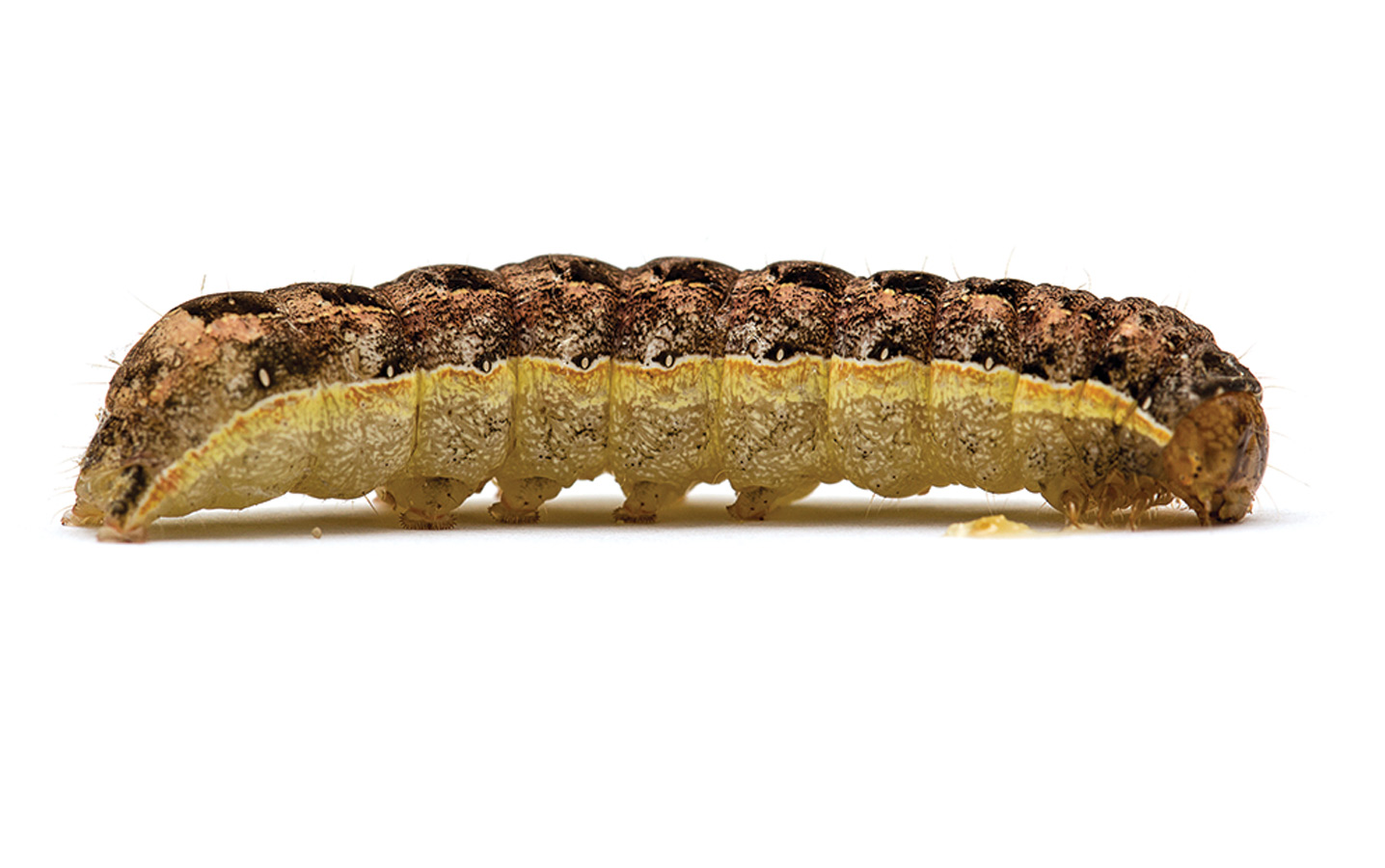Bertha armyworm monitoring system still works
Key result: The current system for monitoring potential bertha armyworm outbreaks is based on a pheromone trap network developed in the 1970s (Steck et al. 1979) and improved in the 1980s (Struble et al. 1984). This study tested the efficiency of this system in the context of current canola production and determined the monitoring and forecasting system in place
is serving the canola industry well.
Project title, Principal investigator: “Improving crop risk assessment tools for bertha armyworm,” Scott Meers, Alberta Agriculture and Forestry
Funding: ACIDF, Alberta Canola, SaskCanola, MCGA
The canola industry has changed dramatically since research was originally conducted on bertha armyworm pheromone trap catches in relation to the subsequent larval density in nearby fields (Turnock 1987). With increased production of hybrid canola and improvements made to the monitoring system, Scott Meers and his team conducted this three-year study to evaluate the current process and revalidate the original research.
The objectives of this study were to: (1) determine the optimum density of pheromone traps; (2) determine the association of larvae numbers and trap counts to improve forecasting through larval sampling; (3) test the impact of trap height and location on moth catch numbers; and (4) develop and test a trap system that would reduce bumblebee catch without affecting bertha armyworm moth catch for forecasting purposes.
From 2012 through 2014, canola fields were identified in a block of 35 townships east of Edmonton, Alta., in an area predicted to have a bertha armyworm outbreak based on increasing pheromone trap moth catches in 2011. Two traps were established in each field and bertha armyworm moths were removed and counted weekly from mid-June throughout July. Moth counts were added to the bertha armyworm map as part of the already established Alberta Insect Pest Monitoring Network.
A larval survey was also conducted on fields with the pheromone traps and nine fields surrounding each of those fields in all directions. An additional 48 fields were sampled in Saskatchewan. In August of each year, larval density was measured using the ‘Manitoba’ method – shaking small sections of canola plants and searching the ground for larvae.
The location of current outbreaks were identified using the Alberta Agriculture bertha armyworm monitoring system. Each field was surveyed at six sites – two each at either end and two in the middle.
Similar to the results recorded by Steck et al. in 1979, traps with a cumulative total of 900 or more moths had the highest proportions of nearby fields with larval counts above the economic threshold. However, over the duration of this study there was a large variation between fields.
Earlier studies found no significant relationship between moth catch and proximity of current-year canola. Meers found a positive correlation, however, with canola grown in the previous year, which suggests that localized outbreaks can develop where populations build up year to year. This is especially true where canola is grown continuously in close proximity, which is now common practice across the entire canola growing region. Monitoring these population increases can be used to determine where more intensive trapping can be deployed to catch potential outbreaks.
To reduce bumblebee bycatch, two distinct prototype traps were developed in partnership with University of Alberta engineering students and the Agriculture Technology Centre of Alberta Agriculture and Forestry. Both prototypes were designed to be closed during the day, excluding bumblebees, and open at night to catch moths. Although these tests did provide advancement towards reducing bumblebee mortality due to moth traps, more work is needed to avoid decreases in number of moths caught and the resulting negative impact on forecast accuracy.
Results
The existing model of bertha armyworm forecasting in Western Canada stood up well to the studies applied during this project. Meers and his team were able to validate that the current methods for trap height, placement in the field and thresholds based on moth catches are serving canola growers well.
Results suggest that placing traps in areas of higher concentration of canola from the previous year are more likely to catch potential outbreaks. Also, while more traps will always give a better indication of bertha armyworm populations, the current trap density rate of approximately five per county is adequate, as long as they are well distributed. Producers should also continue to verify larval density of each field prior to proceeding with control measures because even during outbreaks larval counts can vary greatly from field to field.





